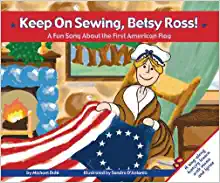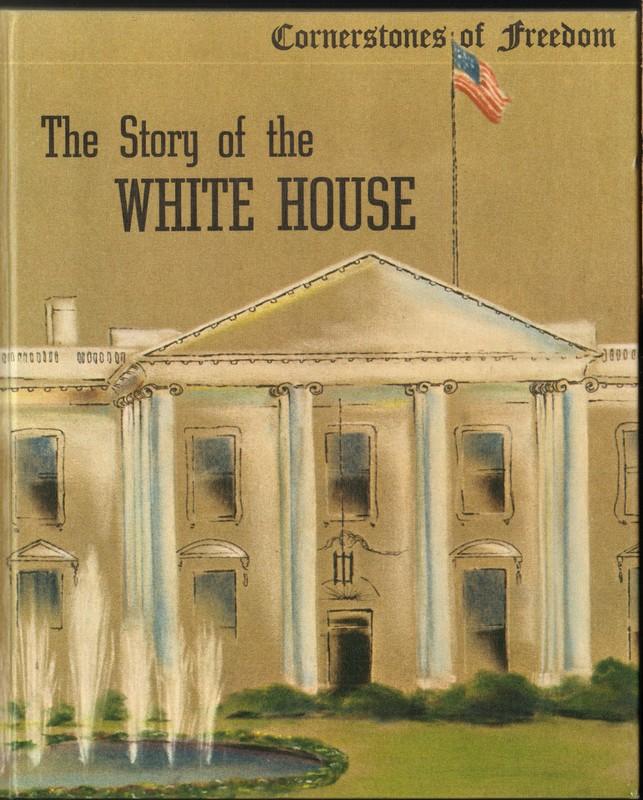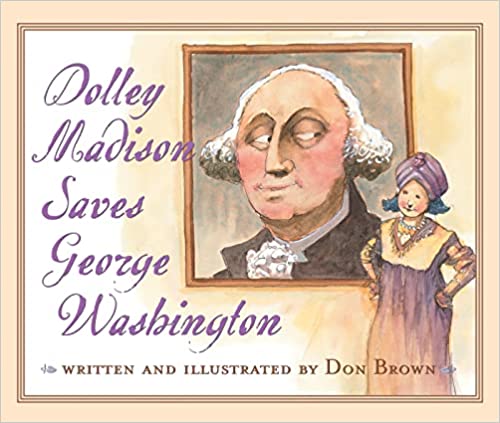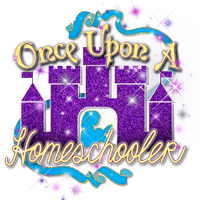The Liberty Bell, American Flag, The White House, the Bald Eagle, The Great Seal, and other American Symbols
Dates covered: 1751-1954
Contains affiliate links
If you appreciate these resources, please consider supporting me on Patreon to enable me to continue to provide more free resources.
Arts and Crafts:
- Liberty Bell Craft
- American Flag Crafts
- Bald Eagle Crafts
- White House Craft
- Washington Monument Craft

- Washington, DC, History for Kids: The Making of a Capital City, with 21 Activities Chronicling the rich and fascinating history of Washington, DC, this useful resource for teachers and parents, reveals to young readers the city’s remarkable past through 21 hands-on activities. Children will gather items for a building cornerstone’s time capsule, design a memorial for a favorite president, take a walking tour of the National Mall, and much more. The book also includes a time line and list of books, websites, and places to visit.

- The White House for Kids: A History of a Home, Office, and National Symbol, with 21 Activities Have you ever wondered what it’s like to live and work in the most important house in the country, or what it’s like to grow up there? Now, with The White House for Kids as your guide, you can explore the Executive Mansion for yourself. This intriguing, in-depth history of the White House explains its role as a home, an office, and a powerful symbol of the United States and tells both famous and little-known stories about some of the surprising—and sometimes surprisingly ordinary—things that go on there. Learn which president hosted T-ball games on the White House lawn; which mischievous first son was scolded for shooting spitballs at a portrait of President Andrew Jackson; which first daughter held her high school prom in the famous mansion; which first lady hung her laundry to dry in the East Room; where first families go to work, entertain, relax, and have fun; how the White House staff feels to see beloved presidential families come and go; and much more. Crosscurricular activities allow readers to walk in the footsteps of presidents and those around them.
Books (All Ages):
1751

Liberty Bell Cornerstones of Freedom series. Relates the story of this famous bell which was cast in England but became the symbol of American independence. Middle to Older students.

The Liberty Bell Why do Americans love a bell that no longer rings? It is the Liberty Bell, and it once rang to announce the birth of a new country, the United States. Find out why Americans still treasure the bell, along with its famous crack. Younger students.

The Story of the Liberty Bell Cornerstones of Freedom. From American revolutionaries to abolitionists to suffragettes, generations have celebrated the Liberty Bell’s message of freedom. This informative book explores the history and importance of America’s most famous bell. Younger to Middle students.
1776

A Flag for Our Country Picture book. Relates how a Philadelphia seamstress helped design and make the first flag to represent the United States of America. Level 3.3. Younger to Middle students.

Betsy Ross and the American Flag Looks at the life of Betsy Ross from her Quaker childhood to her days as an independent businesswoman. Also examines the legend of the Betsy Ross flag. Written in graphic-novel format. Level 3.7. Middle students.

Betsy Ross and the Silver Thimble Betsy Ross wants to do everything that her brother can. But then she learns that it’s more important to do the things she loves. A special section in the back of the book includes a timeline of Betsy’s life. Early Reader. Younger to Middle students. Pennsylvania.

Betsy Ross and the U.S. Flag “Betsy Ross made many flags during the American Revolution, but did she sew the first flag? Infographics, leveled text, and primary sources help readers follow the fact and fiction found in this tale of stars and stripes”

Keep On Sewing, Betsy Ross: A Fun Song about the First American Flag fun, sing-along picture book about Betsy Ross and the First Flag, level 2.7

Our American Flag Picture book, Its stars and stripes ripple and wave. It’s the United States flag, and Americans have flown it for more than 200 years. Join seamstress Mary Pickersgill for a trip through time to see how this symbol of freedom came to be. Level 4.4. Younger to Middle students.

The American Flag Describes the history of the American flag from its original design by Betsy Ross at the request of George Washington, discussing how it has changed over the years and how it came to be a symbol of the United States. Level 5.2. Middle students.

The Flag We Love This spirited tribute to Old Glory will inspire readers, young and old, to take a new look at the greatest emblem of the United States of America. With patriotic verse and historical facts, THE FLAG WE LOVE explores how our flag has become an enduring part of our nation’s proud history and heritage. From its earliest designs to its role in peacetime and war, the Star-Spangled Banner will take on a whole new meaning for all readers. Level 5.9. Younger to Middle students.

The Story of the Star-Spangled Banner Graphic Novel. Discusses the events leading up to the Battle of Fort McHenry and Francis Scott Key’s writing of the Star-Spangled Banner, and later how it became our national anthem. Written in graphic-novel format.
1777

Saving the Liberty Bell, picture book, level 4.0. Pennsylvania.

Saving the Liberty Bell Early reader. Eleven-year-old Johnny Mickley longed to be a hero and have some part in helping America gain its independence. The British Army was just miles away from colonial Philadelphia, planning to invade the city and melt down all of its famous bells for cannons. The colonists were worried, they had to save the bells, especially Old Independence, now called the Liberty Bell. They finally came up with a plan – and Johnny got to help! But would it be enough to keep the bells safe? Younger to Middle students. Level 3.0. Pennsylvania.
1782

The Bald Eagle This strong and beautiful bird is a symbol for an entire country. It is the bald eagle, and Americans made it their national emblem more than 200 years ago. Join Bill the bird keeper to see how this bird lives and how it became a symbol of the United States. Picture Book. Level 4.2. Younger to Middle students.

The Great Seal of the United States How do Americans know that government papers are real? If you see an eagle holding a shield, and a pyramid with an eye above it, the papers are no fakes. Listen to Benjamin Franklin as he talks about the birth of the Great Seal in 1782 and why it’s still so important to our country today. Picture book. Level 4.2. Younger to Middle students.
1791

The House that George Built A rhyming look at the construction of the White House, with information text to provide more detail, picture book, level 5.6
1792

Where is the White House Part of the Who Is series. The history of the White House, first completed in 1799, reflects the history of America itself. It was the dream of George Washington to have an elegant “presidential mansion” in the capital city that was named after him. Yet he is the only president who never got to live there. All the rest have made their mark–for better or worse–on the house at 1600 Pennsylvania Avenue. Megan Stine explains how the White House came to be and offers young readers intriguing glimpses into the lives of the First Families–from John and Abigail Adams to Barack and Michelle Obama. Middle students. Washington, D.C.
1793

Our U.S. Capitol The US Capitol houses both the Congress and Senate, but do you know its history? This building, which stands as a symbol of freedom and democracy, took over 30 years to build. It has survived through wars and has had many changes and additions. Join a tour guide and learn more about the US Capitol. Level 5.0. Younger to Middle students. Washington, D.C.
1800

The Library of Congress A brief history of the Library of Congress describing its role in disseminating information and in collecting, cataloging, and preserving books and other related materials. Level 6.7. Younger to Middle students. Washington, D.C.

The Story of the White House Cornerstones of Freedom series. Middle students.

The White House From the early 1800s, American presidents and their families have called the White House home. But as Secret Service agent Keneesha explains, the White House is more than just a place to live; it’s also the president’s office and one of the country’s greatest symbols of leadership. Level 4.4. Younger to Middle students.

Thomas Jefferson Builds a Library Before, during, and after the American Revolution, Jefferson collected thousands of books on hundreds of subjects. In fact, his massive collection eventually helped rebuild the Library of Congress—now the largest library in the world. Younger to Middle students. Level 4.8. Virginia.
1801

The Year of the Horseless Carriage: 1801-1821 In Genevieve Foster’s inimitable style, she brings to life the dawn of the 19th century with all its wonderful advancements in transportation, communication, and technology! This is the age of Napoleon, Jefferson, Toussaint, Livingston, Robert Fulton, Richard Trevithick, Beethoven, Lewis and Clark, Sacajawea, Dolley Madison, and many others. While the world of technology is progressing rapidly, human rights and liberty are variously being trampled or rising. The megalomaniac Napoleon is proclaiming “liberty, equality, and fraternity” to a war-weary Europe, Jefferson is contemplating the largest land purchase in the history of the world, and Toussaint L’Ouverture is fighting for liberty in Haiti, while Robert Livingston, Robert Fulton, Richard Trevithick, Beethoven, Lewis and Clark, Sacajawea, and Dolley Madison are all playing their parts. Middle to Older students.
1812-1814

Dolley Madison Saves George Washington in the middle of the War of 1812 as the British advance on the White House, Dolley finds time to save George Washington, or at least his portrait. Short picture book, level 5.0

Francis Scott Key’s Star-Spangled Banner Early Reader. Francis Scott Key was a very busy man. He and his wife had 11 children. He was a lawyer and many people came to him for advice. But whenever he had a moment, he would jot down a line of poetry. He loved writing poems. When the War of 1812 broke out, Francis became even busier. He was well-respected and often called upon to help keep the peace as the war between the United States and England raged on. One fateful night Francis and his friend helped talk the British Navy into releasing a prisoner of war. But they couldn’t return home just yet because the Battle of Fort McHenry was starting! If the British captured the fort, America might very well lose its independence. Francis and his friends could only sit on a boat and observe the battle. For 25 hours they watched in awe. What Francis saw inspired him to write a poem that would become America’s national anthem! This Step 3 reader is perfect for children who are ready to read independently. Level 2.9. Younger to Middle students. Maryland.

Long May She Wave: The True Story of Caroline Pickersgill and Her Star-Spangled Creation Picture book. Discover the story of the girl who sewed the American flag that inspired the lyrics of the National Anthem in this beautifully illustrated celebration of our country’s iconic symbol for freedom. Caroline Pickersgill came from a family of the best flag makers in Baltimore. She and her family proudly stitched the grand flag that gallantly whipped in the wind over Fort McHenry. But when the British attacked Baltimore on September 12, 1814, would those broad stripes and bright stars still wave strong? Would America still be free and remain the home of the brave? Level 4.0. Younger to Middle students. Maryland.

Mr. Key’s Song: The Star Spangled Banner Another Really Truly Story a short history behind the Star Spangled Banner. Younger students.

Old Ironsides Discusses the history and exploits of the U.S.S. Constitution, or “Old Ironsides,” a frigate built in the late eighteenth century to fight the pirates of the Barbary States that still floats today. Middle students.

Our National Anthem If you love your country, sing! Since 1931, “The Star-Spangled Banner” has been the national anthem of the United States. Journey back to 1814, and join Francis Scott Key, the man who wrote the words to the anthem, for a close look at this song of freedom. Picture book. Level 4.6. Younger to Middle students. Maryland.

The Star-Spangled Banner Never before has the riveting American saga of “The Star-Spangled Banner” been so beautifully and thoroughly presented. This info-packed story of our national anthem includes:
★ Illustrated lyrics
★ The fascinating history of the War of 1812 and the battle that inspired Francis Scott Key to pen the words
★ Musical notation
★ Historical images
★ A reproduction of Key’s original manuscript
Caldecott Medalist Peter Spier’s magnificent tribute takes readers from our anthem’s turbulent origins at the Battle of Baltimore through the flag’s significance in modern-day America. It’s a must-have for every American family’s library.

The Star-Spangled Banner The War of 1812 and an American victory inspired Francis Scott Key to write his famous poem, “The Star-Spangled Banner,” which later became the national anthem of the United States. The events surrounding the war and Key’s poem helped establish the American flag as a symbol of patriotism and freedom. Remind readers of our nation’s strength and perseverance through engaging historical content, carefully leveled text, and full-color images. Younger to Middle students.

Star-Spangled: The Story of a Flag, a Battle, and the American Anthem “O say can you see” begins one of the most recognizable songs in the US. Originally a poem by Francis Scott Key, the national anthem tells the story of the American flag rising high above a fort after a night of intense battle during the War of 1812. But there is much more to the story than what is sung at ball games. What was this battle about? Whose bombs were bursting, and why were rockets glaring? Who sewed those broad stripes and bright stars? Why were free black soldiers fighting on both sides? Who was Francis Scott Key anyway, and how did he have such a close view? An illustrated history for young readers, Star-Spangled tells the whole story from the perspectives of different key figures—both American and British—of this obscure but important battle. The book includes an author’s note, a timeline, a glossary, endnotes, a bibliography, and an index. Level 8.1. Middle to Older students.

Star Spangled Banner in Translation: What It Really Means How long is four score and seven years? Just what are unalienable rights? These translations make important historical documents meaningful. Each book translates the work of a primary source into a language you can understand. Middle students.

The Flag Maker Here in lyrical prose is the story of the flag that inspired Francis Scott Key to write the words that became the national anthem of the United States. This flag, which came to be known as the Star-Spangled Banner, also inspired author Susan Campbell Bartoletti, who, upon seeing it at the Smithsonian Institution, became curious about the hands that had sewn it. Here is her story of the early days of this flag as seen through the eyes of young Caroline Pickersgill, the daughter of an important flag maker, Mary Pickersgill, and the granddaughter of a flag maker for General George Washington’s Continental Army. It is also a story about how a symbol motivates action and emotion, brings people together, and inspires courage and hope. Picture book. Younger to Middle students. Maryland.

The National Anthem This book explains what a national anthem is; recounts how and why Francis Scot Key wrote “The Star-Spangled Banner,” including the history of the specific flag to which he referred; and describes how his poem eventually became the national anthem. Level 4.9. Younger to Middle students. Maryland.

The Star-Spangled Banner (On My Own History) Looks at the events leading up to the War of 1812 and the battle of Fort McHenry and describes the story of the “Star Spangled Banner” and how the poem became the national anthem of the United States. Early reader. Younger to Middle students. Maryland.

The Story of Old Ironsides Cornerstones of Freedom series. Learn about Old Ironsides, also called the USS Constitution, and its role along with other ships in the War of 1812. Massachusetts. Younger to Middle students.

The Star-Spangled Banner Early Reader. The original Star-Spangled Banner that flew over Fort McHenry, Baltimore, in 1814 and inspired Francis Scott Key to write the words that would become the national anthem of the United States is the showpiece of the Smithsonian! In this lively nonfiction book, young readers will read about the story behind the flag, the song, and how the Smithsonian cares for this most precious national treasure. Level 3.9. Maryland. Younger to Middle students.

The Story of the Star-Spangled Banner Board Book. introduces young children to the story of how the words to our national anthem, ‘The Star-Spangled Banner,’ came to be written, when Francis Scott Key witnessed a battle in the War of 1812 and memorialized it in a moving poem. In addition, toddlers will learn basic ‘flag manners.’ Younger Students.

The Story of the Star-Spangled Banner Cornerstones of Freedom series. The story of our national anthem and how it came about is dramatically illustrated and told in simple text. Middle students. Maryland.

Washington is Burning Fifteen-year-old Paul Jennings looked out the window of the President’s House. America was at war with Britain, and British soldiers were marching toward Washington. Terrified people were fleeing the city. But Paul was not going to join them yet. He was a slave who belonged to President Madison and his wife, Dolley. Dolley did not want to leave until her husband returned from the battlefront. Paul stayed by her side, helping her pack up official papers and belongings. Finally, they could wait no longer. But there was one more treasure they had to save. Were they too late? Early Reader. Younger to Middle students. Washington, D.C.
1862

The Dollar Bill in Translation: What It Really Means “Presents the dollar bill and explains its meaning and symbolism using everyday language. Describes the events that led to the creation of currency and its significance through history”. Younger to Middle students.
1876

The Statue of Liberty: Wonders of the World Visit the Statue of Liberty as Newbery Honor recipient and New York Times bestselling author Marion Dane Bauer takes you on a tour of one of our country’s greatest treasures in this Level 1 Ready-to-Read. Level 3.2. New York. Younger students.

What is the Statue of Liberty? Part of the Who Was? series. In 1876, France decided to give the United States a very big and very special present–the Statue of Liberty. The gift was to commemorate the 100th birthday of the United States, and just packing it was no small feat–350 pieces in 214 crates shipped across the ocean. The story of how the 111-foot-tall lady took her place in the New York Harbor will fascinate young readers. Level 6.0. Middle students. New York.
1884

The Washington Monument Satisfying a common theme in the early social studies curriculum, the series Places in American History introduces young readers to important locations and landmarks in the history of the United States. Each book portrays one famous location, explains why it is important, and describes what visitors see at the site. Maps, charts, and historic photos help readers understand the significance of these landmarks and what makes them so memorable. Level 3.6. Younger to Middle students. Washington, D.C.

Washington Monument Discusses the construction, history, and current status of the Washington, D.C., monument honoring George Washington and some of the famous events that have taken place around its base. Level 4.0. Younger to Middle students. Washington, D.C.
1892

The Pledge of Allegiance (American Symbols) Many kids say the Pledge of Allegiance every day in school. But what does it mean and where did it come from? Francis Bellamy wrote it more than 100 years ago. Join Bellamy in The Pledge of Allegiance for more of the story. Younger to Middle students.
1895

America the Beautiful: Together We Stand A moving celebration of the song “America the Beautiful” featuring artwork from ten distinguished artists and inspiring presidential quotes. Picture book. Younger students.
1922

Climbing Lincoln’s Steps: The African American Journey This empowering and emotionally driven story showcases significant moments in African American history that tie back to the Lincoln Memorial by introducing iconic civil rights activists as well as exploring President Abraham Lincoln’s role in abolishing slavery. This book highlights the hardships and triumphs faced while fighting for racial equality in America. Level 4.9. Picture book. Younger to Middle students. Washington, D.C.

The Lincoln Memorial Picture Book. The Lincoln Memorial honors Abraham Lincoln, the 16th president of the United States. It also stands today as a symbol of unity and freedom. Why does it stand for these things? Join a tour guide and learn more about the creation and importance of the Lincoln Memorial. Level 5.0. Younger to Middle students. Washington, D.C.
1954

The Pledge of Allegiance in Translation: What it Really Means Explains the Pledge of Allegiance in a way kids can understand, with the primary source document side by side with the explanation. Also includes context and Why Should You Care? Level 5.0. Younger to Middle students.
Coloring Pages/Drawing:
- Liberty Bell Coloring Page
- American Flag Coloring Page
- Bald Eagle Coloring Pages
- White House Coloring Page
- Washington Monument Coloring Page
- Lincoln Memorial Coloring Page
Museums/Field Trips (including virtual):
- Liberty Bell Center, Pennsylvania
- Betsy Ross House, Pennsylvania
- Bald Eagle Live Nest Cameras
- National Museum of American Diplomacy
- Visit the White House
- White House Virtual Tour
- Visit the US Capitol Building
- Visit the Library of Congress
- Visit the Washington Monument
- Visit one of the US Mints
- Visit the Lincoln Memorial
- The USS Constitution, ‘Old Ironsides” at Charleston Navy Yard in Boston
Songs:
- The Liberty Bell March | John Philip Sousa (Music only)
- You’re a Grand Old Flag with Lyrics by George M. Cohan(Disney)
- “You’re a Grand Old Flag” – American Patriotic March [LYRICS](traditional)
- “White House” – Executive Branch Song (Flo Rida’s “My House” Parody) – Ben Leddy
- Marian Anderson Sings at Lincoln Memorial
Toys/Games
- Safari Toob Toy Figures of Lincoln Memorial, Hoover Dam, Liberty Bell, Alamo, Mt. Rushmore, Statue of Liberty, Capital, White House & More
- Miniature Flags
- Flags of The World Family Card Game
- Bald Eagle Stuffed Animal Bulk 1 Mommy Eagle Plush with 4 Cute Babies
- The White House 3D Puzzle
- Lego White House
- Monopoly House Divided Board Game: Elections and White House Themed Game
- Wide Assortment of US Capitol Games
Videos (1-20 minutes): (See also Movies)
- Liberty Bell- Philadelphia, PA – Travel Thru History
- American flag facts, etiquette and history
- American Eagles for Kids | Learn all about the national symbol of the USA
- The Great Seal of the United States: America’s Emblem
- White House History
- Washington DC – US Capitol for Children | Social Studies for Kids | Kids Academy
- ◄ US Capitol, Washington [HD] ►
- Star Spangled Banner As You’ve Never Heard It
- How Money Is Made | How Stuff Is Made | Refinery29
- The Surprising History of the Pledge of Allegiance
- How to Memorize The Pledge of Allegiance

